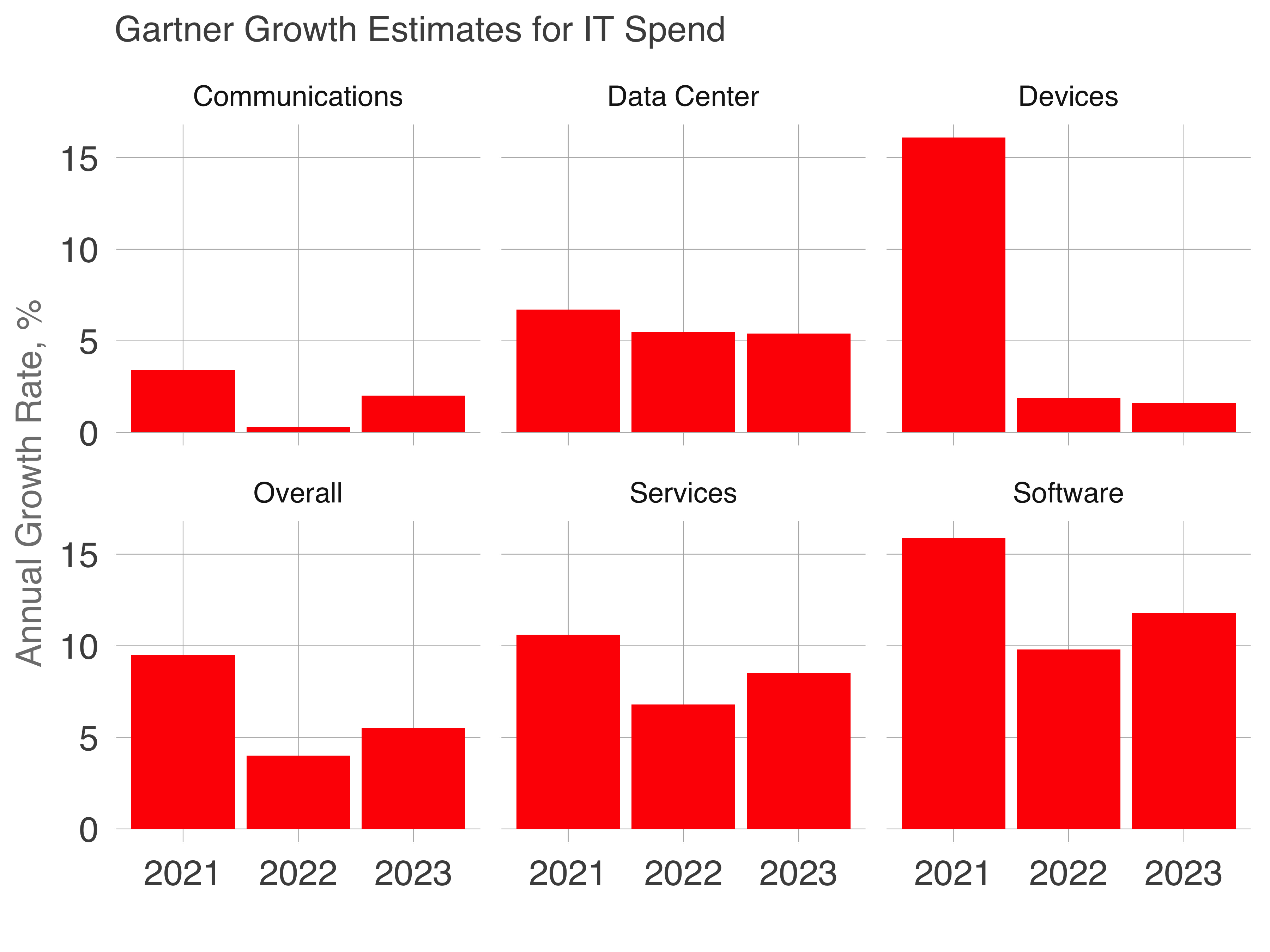The public markets are deep crimson. The last time VC sentiment was so publicly negative, Twitter turned two. Term sheet re-trading rumors have surfaced.
Public markets do impact startup fortunes, but only inasmuch as the prices at which venture rounds clear. IT spend is the more important canary in the coal mine.
If customers cut their software spend, startups should expect a harsher climate.

Gartner published their IT spend forecast on Apr. 6. According to their math, IT budgets will increase 4% and software budgets will grow 9.8%, the fastest of any segment. It’s anyone’s guess whether these numbers will reflect reality. Studies like this one lag patterns especially when market conditions change.
Rather than reading these reports, startups ought to perk up their ears to the echoes of budget contraction within their customer bases.
Pricing power warning signs take many forms including
- slowing sales cycles
- more account executives missing quota
- increased logo and dollar churn
- declines in funnel yield
- layoffs within the ideal customer profile
The net effect of these signals are a cashflow shockwave - a sudden increase in burn.
Account executives accustomed to closing their quota miss the figure. Marketing dollars no longer yield the same efficiency. Costs of customer acquisition spike. If operational burn remains the same and bookings decline, cash burn surges.
I remember working with one company who experienced a shockwave that doubled burn for two quarters because of these dynamics in an earlier correction. No one in the company or the board anticipated it. Overnight, our time to zero-cash accelerated by nine months.
It’s too early to say whether the macroeconomic factors at play will trigger a decline in IT spend this year. But it’s a good time to be vigilant of signal that presage slimming IT wallets, to calculate the company’s sensitivity to a resulting cashflow shockwave, and develop a plan to mitigate it.